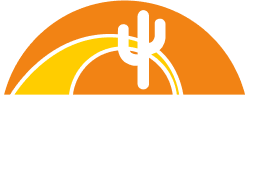5 Tips to Protect Hearing on Construction Sites

Hearing loss is a hazard that affects thousands of American workers every year. With work environments consisting of heavy machinery and fast-moving jobsites, construction workers are at increased risk for hearing loss. Because hearing damage is not always immediately noticeable, knowing steps to take now can help prevent long-term, permanent hearing loss later.
In association with National Protect Your Hearing Month, Sunstate has pulled together the top five tips to help protect hearing on a construction site.
1. Know the Limits
When it comes to hearing safety, it’s all about decibels and duration. According to National Institute for Occupational Health and Safety (NIOSH), the Recommended Exposure Limit (REL) for occupational noise exposure is 85 decibels in an 8-hour workday. Anything beyond this is considered hazardous.
For example, a leaf blower puts out about 80-85 decibels. Unprotected exposure of 2 hours can cause damage. However, sounds like car horns at close range (100 dB) can cause hearing loss after 15 minutes.
To understand and compare noise levels, this chart from the CDC lists common sources of noise and decibel levels.
Modern technology makes it easy for employers and safety professionals to monitor noise levels on jobsites, construction tools and equipment right from a smartphone. NIOSH has developed a Sound Level Meter (SLM) app to “promote better hearing health and prevention efforts.”
2. Wear Protective Gear
NIOSH recommends workers wear properly fitting hearing protection when exposed to noise that is greater than or equal to 85 dBA in an 8-hour time average. Employers are expected to provide hearing protection to their workers. In some cases, a second layer of hearing protection, such as wearing earmuffs over ear plugs, may be necessary.
Find the right type of gear, or combination, that allows adequate protection, comfort and safety for each unique set of working conditions:
Expandable foam plugs
Pre-molded, reusable plugs
Canal caps
Earmuffs
3. Plan Ahead
In many cases, noise levels can be controlled through strategic planning and selecting the right type of equipment for the job. OSHA recommends this three-step noise hazard control process:
Reduce It: Reduce potential noise by selecting the quietest equipment available.
Move It: Whenever possible, use equipment or power tools away from areas where people are working.
Block It: Noise levels can be blocked with temporary barriers of on-site materials such as plywood.
When possible, consider scheduling the loudest tasks for a time of day or day of the week when the least amount of people will be in the immediate area, and limit the number of hours people are onsite during hazardous sound conditions.
Grab this Noise in Construction OSHA Pocket Guide for easy on-the-job reference.
4. Communication is Key
Construction sites buzzing with heavy equipment and tools can contain secondary safety risks when hearing is obscured by inherently loud conditions. When the continual noise of machinery hinders communication, workers need to have nonverbal ways to communicate in order to stay safe around other worksite hazards. In addition to using proper PPE, posting additional safety signage, ongoing safety training, and encouraging team members to use hand signals to communicate in loud conditions are an important part of jobsite safety protocol.
5. Know the Signs
Because hearing loss is a gradual process, it can be easy to dismiss the danger. Workers in occupations with high noise levels or extended exposure may be at higher risk for hearing loss and are recommended to get their hearing tested on a regular basis.
Understanding the risk and recognizing the symptoms of hearing loss—pain, ringing in the ears, or difficulty hearing sounds or discerning speech—can help prevent long-term damage. Regular hearing tests can help identify damage early. If sudden hearing loss in one or both ears occurs, seek medical attention immediately.
Although there have been advances that allow those with hearing loss to live a normal life, those working in loud conditions, such as construction sites, need to take proper precautions to prevent damage. Schedule regular check-ups, turn the volume down, take breaks from the noise, and always use hearing protection when working around loud machines or conditions.
For more information, read this NIOSH publication, “Preventing Occupational Hearing Loss, A Practical Guide,” for comprehensive guidance on how employers can protect workers’ hearing safety.
Ask a Sunstate rental professional about our selection of quiet, emission-free electric boom lifts, man lifts, forklifts, and tool options that can help reduce noise in confined working conditions.

©2024 Sunstate Equipment Co., LLC

